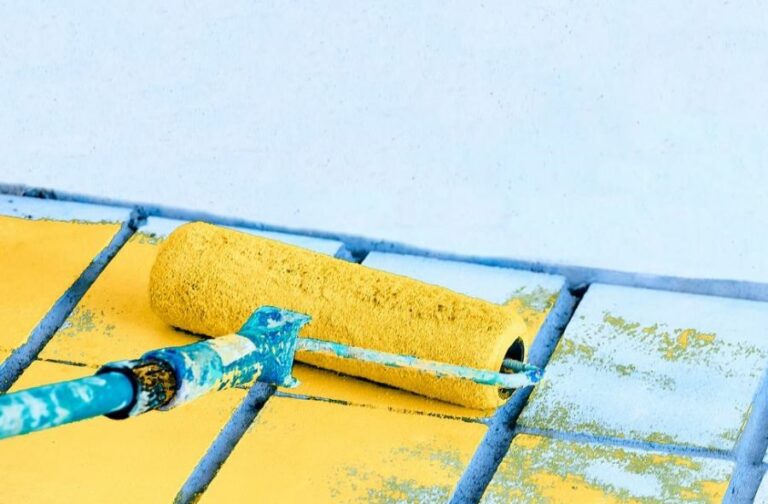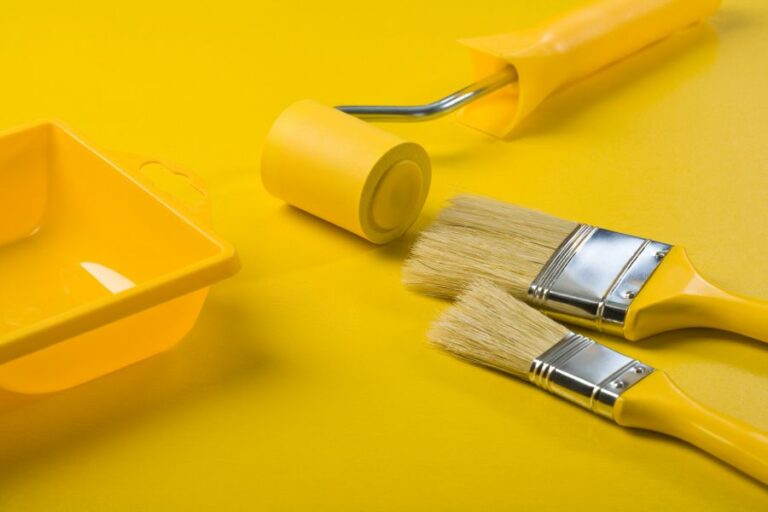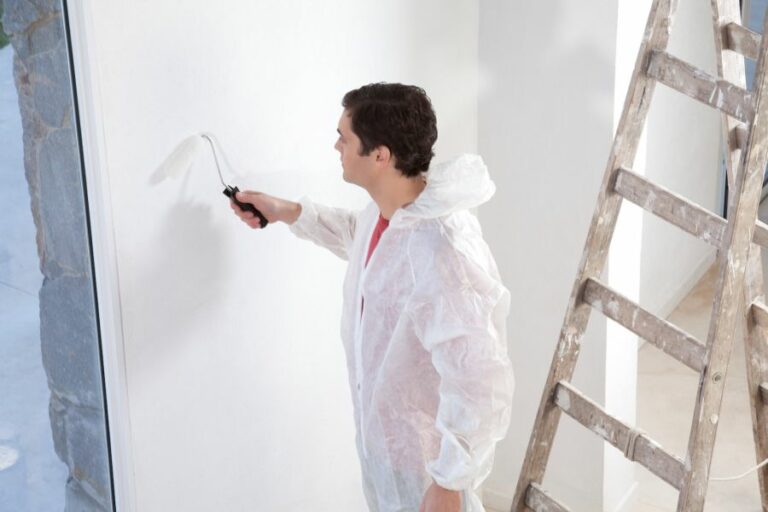Enhance Wood With Paintable PWRP. What Pros Say
Are you looking to transform your wooden surfaces and get a stunning finish that will invite admiration from all who see it? Look no further because the solution you’ve been seeking is paintable PWRP, the ultimate game-changer for enhancing wood. With our guidance and expertise, we’ll help you discover this remarkable product that delivers exceptional results and breathes new life into your project.
Enhance wood with paintable PWRP:>
Paintable PWRP (polyurethane wood repair putty) is a versatile solution for improving wood aesthetics, suitable for DIY enthusiasts and professional woodworkers. It can repair imperfections, create custom shapes, and provide a paint-ready surface. PWRP is easy to apply, bonds well with various wood types, and can be used both indoors and outdoors in various woodworking projects.

Discover the wonders of paintable PWRP and how it can transform your wooden surfaces! Unleash your creativity and learn the benefits, ideal applications, and tips to improve your wood projects. Read on to elevate your woodworking game with this innovative solution!
Contents
- 1 Improve Wood Aesthetics with Paintable PWRP
- 2 Elevating Wood Appearance: Tips and Tricks
- 3 Applying Polyurethane on Wood: Is It Possible?
- 4 Painting Stained Wood: Can I Skip Sanding?
- 5 Boosting Wood Grain Texture: Techniques & Methods
- 6 Top Primer Choices for Covering Stained Wood
- 6.1 • Oil-Based Primers: A Classic Choice
- 6.2 • Water-Based Primers: A Convenient Alternative
- 6.3 • Shellac-Based Primers: The High-Performance Option
- 6.4 • Hybrid Primers: The Best of Both Worlds
- 6.5 • Expert Tip: occasionally, you might need to use a wood conditioner to even out the surface before applying the primer. This can help prevent blotches on certain types of stained wood.
- 6.6 • In Conclusion
Improve Wood Aesthetics with Paintable PWRP
Paintable PWRP (polyurethane wood repair putty) is an innovative solution for enhancing the appearance of wood, making it an ideal choice for both DIY enthusiasts and professional woodworkers.
This versatile product offers numerous benefits, including the ability to repair imperfections, create custom shapes, and provide a paint-ready surface.
• A Closer Look at the Benefits of Paintable PWRP
PWRP is favored by experts for multiple reasons, including its ease of use, excellent bonding properties, and compatibility with various wood types. We’ll discuss each of these advantages in more detail below.
– Simple Application Process
One of the best aspects of paintable PWRP is its straightforward application process. The putty can be easily spread and shaped using basic woodworking tools, such as a putty knife or a spatula. The material is also odorless and cleans up quickly, making for a hassle-free work experience.
– Strong Bonding Properties
Paintable PWRP forms a strong bond to different types of wood, ensuring a long-lasting repair or enhancement that wont deteriorate over time. This strength makes it suitable for both indoor and outdoor projects.
– Versatile Compatibility
The putty is designed to work with a wide range of wood types from softer species like pine, to hardwoods such as oak and walnut. This compatibility allows you to use paintable PWRP in various projects without the need for additional products.
• Key Applications of Paintable PWRP
Paintable PWRP is a versatile product that can be used for a range of woodworking projects. Some of the key applications include:
– Repairing Imperfections
Paintable PWRP can be used to fix surface defects and damage, such as holes, cracks, or splits in the wood. This aspect helps to restore a uniform appearance and prepares the surface for painting or staining.
– Custom Molding and Shaping
Another popular use for paintable PWRP is creating custom shapes and moldings. The putty can be shaped to form intricate designs and patterns, which can then be sanded and painted to match existing woodwork or create striking new features.
– Surface Preparation
By filling in gaps and smoothing rough or uneven surfaces, paintable PWRP creates a seamless, paint-ready surface. This attribute ensures a professional finish and eliminates the need for additional sanding or priming.
• Expert Tips for Working with Paintable PWRP
Achieving the best results with paintable PWRP requires a few essential techniques. Here are some expert tips to guide you through the process.
– Properly Prepare the Surface
Before applying the putty, ensure the surface is clean and free from dirt and debris. If any old paint or finish is present, remove it using a suitable method such as sanding or stripping. This step is crucial for ensuring optimal adhesion of the PWRP.
– Mix the Putty Thoroughly
Stir the PWRP well before use to ensure a smooth, consistent texture. This mixing will help reduce the likelihood of air bubbles and ensure ease of application.
– Apply in Thin Layers
When using paintable PWRP, it’s best to apply the putty in thin layers building up gradually until the desired thickness is reached. This technique will help prevent cracking and make sanding easier.
– Allow Adequate Drying Time
For best results, let the putty dry completely before sanding or painting. The drying time may vary depending on the thickness of the application, so be sure to consult the manufacturer’s instructions.
– Sand Smoothly
Once the PWRP is dry, sand the area to create a smooth and even surface. Start with coarse sandpaper (around 80-100 grit) and work your way up to finer grits until the desired smoothness is achieved.
• Final Thoughts and Recommendations
With its versatility and ease of use, paintable PWRP is an essential product for woodworkers and DIY enthusiasts alike. By following the expert tips and techniques outlined in this guide, you’ll be well-equipped to enhance your wood projects with professional results.
Elevating Wood Appearance: Tips and Tricks
Wood is a beautiful and versatile material that has been used for centuries in various applications, from construction to furniture making. Over time, wood can lose its luster and beauty due to aging, exposure to the elements, or improper care.
• Cleaning and Maintenance
Proper cleaning and maintenance are vital to preserving the appearance of wood. To clean wood surfaces, use a gentle cleaner formulated specifically for wood, like a diluted mixture of water and mild dish soap.
Lightly dampen a microfiber cloth or sponge with the cleaning solution and gently wipe the surface, following the direction of the wood grain.
• Repairing Surface Imperfections
Over time, wood may develop scratches, dents, or gouges that can detract from its beauty. To repair these imperfections, use a wood filler made to match the color of your wood. Apply the filler with a putty knife, smooth it over the damaged area, and allow it to dry before sanding it flush with the surface.
For smaller scratches, a touch-up marker or a wax-based repair stick can be used to fill in the imperfection and blend it with the surrounding wood.
• Sanding and Preparing the Surface
Before staining or finishing the wood, it is essential to sand and prepare the surface properly. Start by using a medium-grit sandpaper (around 120-grit) to remove surface imperfections and even out the wood.
Next, move to a finer grit (180-grit) sandpaper to create a smooth surface. Be sure to sand with the grain of the wood and remove any dust with a vacuum or tack cloth.
• Choosing a Wood Stain
To change the color of the wood or enhance its natural beauty, consider using a wood stain. There are various types of stains to choose from, such as oil-based, water-based, and gel stains. It is important to choose a stain that is suitable for your specific wood type and desired look.
When applying the stain, use a natural bristle brush or clean cloth and apply the stain in the direction of the wood grain. Allow the stain to penetrate the wood for the recommended time before wiping away any excess with a clean cloth.
• Applying a Wood Finish
A wood finish is essential for protecting the wood and providing a durable surface that is resistant to wear and tear. There are several types of finishes available, including polyurethane, varnish, shellac, lacquer, and natural oil finishes.
The type of finish you choose should depend on the desired appearance and the level of protection needed for the wood. Polyurethane and varnish provide a durable finish, while shellac and lacquer create a beautiful shine.
Natural oil finishes, such as tung oil or linseed oil, enhance the natural beauty of the wood but may require more frequent maintenance.
To apply a finish, use a high-quality brush and apply the product with the grain of the wood, following the manufacturer’s instructions. Allow the finish to dry completely before sanding lightly with a fine grit sandpaper and wiping away any dust. Repeat the process for additional coats, as needed.
• Expert Tips and Recommendations
- Always test your wood stain and finish on an inconspicuous area or scrap piece of wood to ensure the desired color and appearance.
- When staining or finishing, work in a well-ventilated area and protect nearby surfaces with drop cloths or plastic sheeting.
- For outdoor wood furniture or structures, consider using a UV-protective finish or paint to help guard against fading due to sun exposure.
- Maintain the appearance of your wood by reapplying a protective finish or topcoat as needed and by regularly cleaning the surface as recommended above.
In conclusion, enhancing the appearance of wood is a multi-step process that includes cleaning, repairing, staining, and finishing the surface. With the proper tools, techniques, and care, it is possible to rejuvenate aged or damaged wood and restore its beauty for years to come.
Method | Description |
|---|---|
Cleaning | Remove dust, dirt, and debris using a soft, slightly damp cloth or a vacuum with a brush attachment. |
Sanding | Smooth the wood surface with sandpaper, starting with a coarse grit and finishing with a fine grit for a smooth finish. |
Staining | Apply a wood stain to change the color of the wood, enhance its natural appearance, or highlight wood grain patterns. |
Painting | Apply a coat of wood-specific paint in the desired color to create a new look for the wood surface. |
Sealing | Apply a wood sealer or varnish to protect the wood surface from moisture, scratches, and other types of damage. This also adds a smooth, glossy finish to the wood. |
Polishing | Buff the wood surface with a soft cloth or a polishing pad, using wood-specific polishing compounds or wax to create a shine and highlight the wood’s natural beauty. |
Applying Polyurethane on Wood: Is It Possible?
Polyurethane is a versatile and durable finish for wood, offering excellent protection from moisture, scratches, and general wear and tear.
• Selecting the Right Polyurethane for Your Project
There are several types of polyurethane finishes available, each with its own advantages and disadvantages. Here are the most common types:
– Oil-Based Polyurethane
Oil-based polyurethane is a popular choice for many woodworkers due to its durability and long-lasting protection. This type of finish typically takes longer to dry compared to water-based polyurethane, but it tends to have a richer, more amber hue that enhances the natural color of the wood.
– Water-Based Polyurethane
Water-based polyurethane is an eco-friendly alternative to oil-based finishes, as it emits fewer volatile organic compounds (VOCs) and has a lower odor. This type of finish dries more quickly and goes on clear, which is ideal for preserving the wood’s natural color.
However, water-based polyurethane may not offer the same level of protection as oil-based varieties, so it may not be the best choice for high-traffic areas or outdoor uses.
– Wipe-On Polyurethane
Wipe-on polyurethane is a thinned version of oil or water-based polyurethane, designed for easy application using a cloth or rag.
This type of finish is ideal for smaller projects or for getting into tight spaces, but it may require more coats to achieve the same level of durability as brush-on polyurethane.
• Preparing the Wood Surface
Before applying polyurethane, it’s essential to properly prepare the wood surface to ensure a smooth and even finish.
– Sanding
Begin by sanding the wood with progressively finer grits of sandpaper, starting with 100- or 120-grit and working up to 220-grit. This will remove any surface imperfections, rough spots, and previous finish residue.
– Removing Dust and Debris
After sanding, thoroughly wipe the surface with a tack cloth or lightly dampened microfiber cloth to remove any dust or debris. This step is crucial, as any residue left on the wood can lead to an uneven finish.
– Conditioning the Wood (Optional)
For softwoods such as pine, fir, or spruce, applying a wood conditioner before the polyurethane can help to promote an even finish. Follow the manufacturer’s instructions for the proper application.
• Applying the Polyurethane
Once the wood surface is properly prepared, you can begin to apply the polyurethane.
– Stirring, Not Shaking
Before opening the can of polyurethane, gently stir the contents with a stirring stick. Do not shake, as this can introduce air bubbles that may lead to a less smooth finish.
– Test Application
It’s a good idea to test the polyurethane on a scrap piece of wood or an inconspicuous area before applying it to the entire project. This will allow you to see how the finish will look on the wood and make any necessary adjustments to your application technique.
– Brush or Rag Application
For oil or water-based polyurethane, use a high-quality natural bristle or synthetic brush to apply a thin, even coat to the wood. Follow the grain direction and avoid over-brushing, as this can leave brush marks and uneven areas.
For wipe-on polyurethane, apply the finish using a clean, lint-free cloth or rag. Wipe along the grain of the wood, maintaining even pressure and coverage.
– Drying Time and Recoating
Allow the polyurethane to dry according to the manufacturer’s instructions. Oil-based polyurethane typically takes longer to dry than water-based varieties, so plan your project accordingly.
For a more durable finish, apply additional coats of polyurethane, allowing the appropriate drying time between coats. Be sure to lightly sand between coats with 220- or finer grit sandpaper to promote adhesion and remove any imperfections.
• Final Touches and Curing Time
After applying the desired number of polyurethane coats and allowing for proper drying time, lightly buff the surface with #0000 steel wool or a fine-grit sanding pad. Then, remove any residue with a tack cloth.
Allow the polyurethane to fully cure according to the manufacturer’s recommendations before using or handling the finished project. This may take several days to a week, depending on the type of polyurethane used.
In conclusion, applying polyurethane to wood is a straightforward process that can greatly enhance the appearance and durability of your project.
By carefully selecting the appropriate type of polyurethane, preparing the wood surface, and following proper application techniques, you can achieve a professional-looking finish with lasting protection.
Question | Answer |
|---|---|
Can you just put polyurethane on wood? | Yes, you can apply polyurethane directly on wood to protect and enhance its appearance. It provides a clear, durable finish that protects the wood surface from moisture, scratches, and other damage while also highlighting its natural beauty. |
Painting Stained Wood: Can I Skip Sanding?
When it comes to painting over stained wood, many wonder if it’s possible to achieve a professional result without the tedious and time-consuming step of sanding.
The good news is that, yes, you can paint over stained wood without sanding. With the right techniques, tools, and products, you can achieve a professional, long-lasting finish with minimal effort.
• Importance of Proper Surface Preparation
Preparing the surface properly is crucial to achieving a professional and durable result. Although sanding is often recommended as part of the process, it’s not always necessary. However, some essential steps should not be skipped:
- Cleaning the surface thoroughly
- Repairing any damage
- Priming the wood to create a base for the paint
– Cleaning and Repair
The first step in painting any surface is to ensure it’s clean and free of any dust, dirt, grease, or any other contaminants that could interfere with paint adhesion. This is especially important when dealing with stained wood, as grease and residue can build up over time.
Use a mild detergent solution and a clean, lint-free cloth to wipe down the surface. Allow it to dry completely before moving on to the next step.
If there are any cracks, gouges, or other damage to the wood, repair these imperfections using a wood filler. Apply the filler according to the manufacturer’s instructions, and then sand the area with fine-grit sandpaper until it’s smooth and level with the rest of the surface.
– Priming the Wood
Once the surface is clean and repaired, the next step is to apply a quality primer. A primer is essential when painting over stained wood because it provides a barrier between the stained surface and the new paint, ensuring better adhesion, coverage, and a longer-lasting finish.
For painting over stained wood without sanding, use a bonding primer that’s specifically designed for use on glossy surfaces. One such primer is Zinsser’s B-I-N Shellac-Base Primer, which provides excellent adhesion for both oil and water-based paints.
Apply the primer with a brush or roller, following the manufacturer’s instructions for application and drying time.
• Choosing the Right Paint for Stained Wood
A key factor in a successful and durable paint job is choosing the right type of paint for the project.
Though water-based (latex) and oil-based (alkyd) paints can both be used over a properly prepared and primed surface, many experts recommend using oil-based paint as it provides a more durable and resistant finish than water-based paint.
However, if you prefer to use water-based paint, choose one with high-quality acrylic enamel, as it will provide better durability and adhesion than standard latex paint.
• Painting Techniques for a Smooth, Professional Finish
Achieving a smooth and professional finish without sanding requires using the right painting techniques and tools. Follow these recommendations to ensure a successful paint job:
- Use high-quality brushes and rollers: Invest in quality brushes and roller covers, as they can make a significant difference in the final appearance of the paint job.
- Apply thin, even coats: To avoid brush marks and achieve a smooth finish, apply thin, even coats of paint, allowing each coat to dry completely before applying the next.
- Maintain a “wet edge”: When painting, try to keep a wet edge so that the paint does not have a chance to dry before you move to the next area, resulting in overlap marks.
- Sand between coats (optional): If you want an exceptionally smooth finish, consider lightly sanding the surface between coats using fine-grit sandpaper. Although this step is not necessary, it can help eliminate any brush marks or imperfections in the paint.
• Conclusion
In summary, with proper surface preparation, the right primer and paint, and good painting techniques, it is possible to paint over stained wood without sanding, achieving a professional, long-lasting finish.
By following the steps outlined in this article, you can save time and effort while still producing an impressive result.
Boosting Wood Grain Texture: Techniques & Methods
Wood grain texture adds character and beauty to wood surfaces, making it an essential aspect of woodworking, furniture making, and wood finishing.
• Understanding Wood Grain
Before we delve into techniques for increasing and enhancing wood grain texture, it’s essential to understand what wood grain is and how it affects the wood’s properties. The grain of wood refers to the pattern created by the cells and growth rings in trees.
Wood grain characteristics can vary significantly between different tree species, individual trees within a species, and even within sections of a single tree.
• Sanding Techniques
One effective way to bring out the wood grain texture is through proper sanding techniques.
– Sanding with the Grain
Sanding with the grain is a fundamental rule in woodworking. This method prevents scratches and gouges across the grain, which can be difficult to remove and disrupt the natural grain pattern. Make sure to use the appropriate grit sandpaper and follow the wood grain pattern.
– Wet Sanding
Wet sanding involves using water or a water-based lubricant during the sanding process. The lubricant reduces friction, helping the sandpaper to glide along the wood surface, removing less of the softer wood tissues and preventing less dust.
The result is a smoother surface that emphasizes the wood’s natural grain pattern.
• Using Wood Dyes and Stains
Applying wood dyes and stains can enhance the wood grain texture by adding color and contrast to the wood surface. Choosing the right dye or stain depends on the desired effect and the species of wood.
– Wood Dyes
Dyes are soluble colorants that penetrate deep into the wood surface. They provide even coloring while allowing the natural grain to show through. Dyes can be used alone or combined with stains to achieve the desired color and enhanced grain texture.
– Wood Stains
Stains are pigmented coatings that color the wood surface by depositing pigment particles into the wood pores.
Stains provide more contrast to the wood grain than dyes but may obscure the natural grain pattern. To achieve the best results, always apply stains evenly and wipe off the excess before it dries.
– Toning and Glazing
Toning and glazing techniques involve applying a colored finish on top of a sealed wood surface to enhance the wood grain texture. Toning involves adding color to a clear finish, like lacquer or polyurethane, and applying it over the sealed wood surface.
Glazing is accomplished by applying a colored medium, such as a gel stain or glaze, over the sealed surface and then wiping off the excess. Both techniques provide a final finish that enhances the wood grain’s texture and color.
• Wire Brushing and Sandblasting
Wire brushing and sandblasting are mechanical methods used to create or enhance the texture of the wood grain.
– Wire Brushing
Wire brushing involves using a wire brush to remove the softwood fibers from the wood surface, leaving the harder wood fibers and grain pattern more visible. This technique works best on woods with a pronounced difference in hardness between the grain lines, such as oak or ash.
– Sandblasting
Sandblasting uses compressed air to blast abrasive media, such as sand or glass beads, at the wood surface. The process aggressively removes the softer fibers from the wood, leaving behind a more pronounced grain pattern.
Sandblasting is a more aggressive technique, and it’s essential to use the process with caution to avoid damaging the wood.
• Conclusion
Enhancing the wood grain texture can add value and appeal to your woodworking project. By using proper sanding techniques, applying wood dyes and stains, or employing mechanical methods like wire brushing and sandblasting, you can bring out the beauty in the natural wood grain.
Always choose a technique appropriate for the specific wood species and desired effect, and be sure to practice your chosen method on scrap wood before applying it to your final project.
Step | Description |
|---|---|
1 | Choose a wood species with a pronounced grain pattern, such as oak, ash, or walnut. |
2 | Sand the wood surface to prepare it for staining. Start with a coarse sandpaper and work your way to finer grits. |
3 | Apply a pre-stain wood conditioner to ensure even staining and enhance the grain pattern. |
4 | Select a wood stain that penetrates the wood and accentuates the grain. Pigmented or dye-based stains are suitable options. |
5 | Brush or wipe the stain onto the wood surface, following the direction of the grain. Allow the stain to sit for a few minutes before wiping off the excess with a clean cloth. |
6 | Apply additional coats of stain, if desired, to darken the color and further emphasize the grain texture. |
7 | Finish the wood with a clear protective coating, such as polyurethane or lacquer, to seal the wood and enhance the grain texture. |
Top Primer Choices for Covering Stained Wood
When it comes to painting over stained wood, using the right primer is the key to achieving a flawless finish. The best primer for this task should be able to cover stains, adhere well to the surface, prevent tannin bleed, and provide a smooth base for the topcoat.
• Oil-Based Primers: A Classic Choice
Oil-based primers have long been a popular choice for painting over stained wood. These primers offer excellent adhesion, stain blocking, and tannin resistance, making them ideal for use on porous surfaces like wood.
While these primers can be highly effective, they do come with a few drawbacks, including longer drying times and harsher fumes.
– Recommended Product: Zinsser Cover Stain
Zinsser Cover Stain is an oil-based primer that is highly regarded for its ability to provide excellent stain blocking and adhesion on stained wood surfaces. This primer can be used on both interior and exterior projects and dries within 2 hours, allowing for a faster painting process.
• Water-Based Primers: A Convenient Alternative
Water-based primers, also known as latex primers, are a more convenient alternative to oil-based primers. They have a lower odor, faster drying times and are easier to clean up with soap and water.
However, they may not offer the same level of stain blocking and tannin resistance as oil-based primers, which can be problematic on certain types of stained wood.
– Recommended Product: Zinsser Bulls Eye 1-2-3
For those who prefer water-based primers, Zinsser Bulls Eye 1-2-3 is a top choice. It offers excellent adhesion and stain blocking abilities, making it ideal for many stained wood surfaces. This primer can also be used on both interior and exterior projects, and it dries quickly, within 30 minutes.
• Shellac-Based Primers: The High-Performance Option
Shellac-based primers are the heavyweights of the primer world when it comes to stain blocking and tannin resistance. They excel at sealing in stubborn stains and provide a high-performance, durable base for your topcoat.
However, they also come with higher costs and can be more difficult to clean up compared to water-based primers.
– Recommended Product: Zinsser B-I-N
As a high-performance shellac-based primer, Zinsser B-I-N offers unrivaled stain-blocking capabilities.
This primer is highly recommended for use on heavily stained or tannin-rich wood surfaces like redwood or cedar. It dries quickly, within 45 minutes, and can be used for both interior and exterior projects.
• Hybrid Primers: The Best of Both Worlds
Hybrid primers, also known as alkyd or acrylic primers, offer a combination of the best qualities found in both oil-based and water-based primers. They provide superior adhesion and stain blocking while also offering the benefits of easier clean-up and lower odor.
These primers are becoming increasingly popular for painting over stained wood.
– Recommended Product: Kilz Premium High-Hide Stain Blocking Primer
Kilz Premium High-Hide Stain Blocking Primer is a highly-regarded hybrid primer that combines the advantages of water-based and oil-based primers.
This primer is ideal for use on stained wood surfaces and offers top-notch stain blocking capabilities, adhesion, and a quick drying time of about 1 hour.
• Expert Tip: occasionally, you might need to use a wood conditioner to even out the surface before applying the primer. This can help prevent blotches on certain types of stained wood.
• In Conclusion
The best primer for painting over stained wood will depend on your personal preferences and the specific needs of your project.
Oil-based primers, like Zinsser Cover Stain, offer superior performance, while water-based primers, such as Zinsser Bulls Eye 1-2-3, provide a more convenient alternative.
For heavy-duty stain blocking, shellac-based primers like Zinsser B-I-N are the way to go, and hybrid primers like Kilz Premium High-Hide Stain Blocking Primer offer an excellent balance of performance and convenience.
No matter which primer you choose, applying it correctly and giving it adequate time to dry will help ensure that your topcoat adheres well and looks great for years to come.
Brand | Product | Type | Coverage |
|---|---|---|---|
Zinsser | B-I-N | Shellac-based | Approx. 400 sq. ft. per gallon |
Zinsser | Cover Stain | Oil-based | Approx. 350 sq. ft. per gallon |
KILZ | Original Multi-Surface Stain Blocking Primer/Sealer | Oil-based | Approx. 300 sq. ft. per gallon |
Zinsser | Bulls Eye 1-2-3 | Water-based | Approx. 400 sq. ft. per gallon |
KILZ | MAX Maximum Stain and Odor Blocking Interior Primer/Sealer | Water-based | Approx. 300 sq. ft. per gallon |







